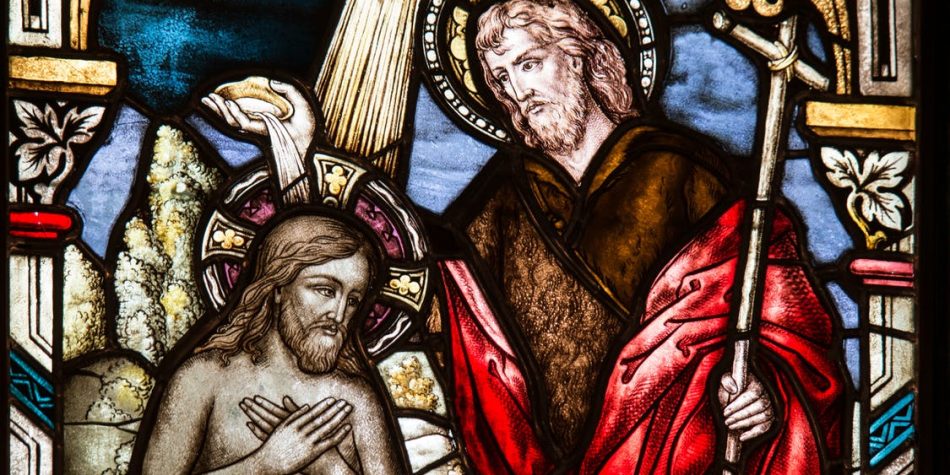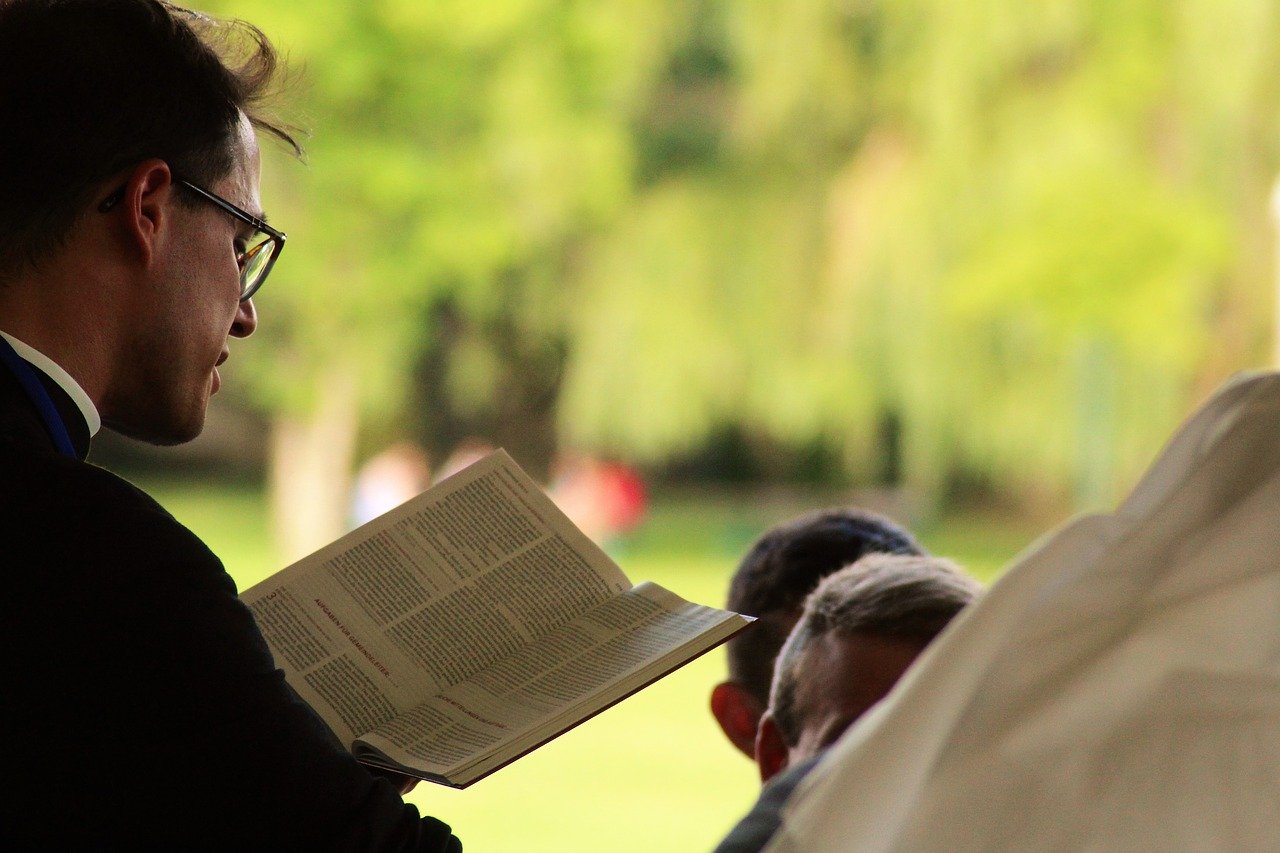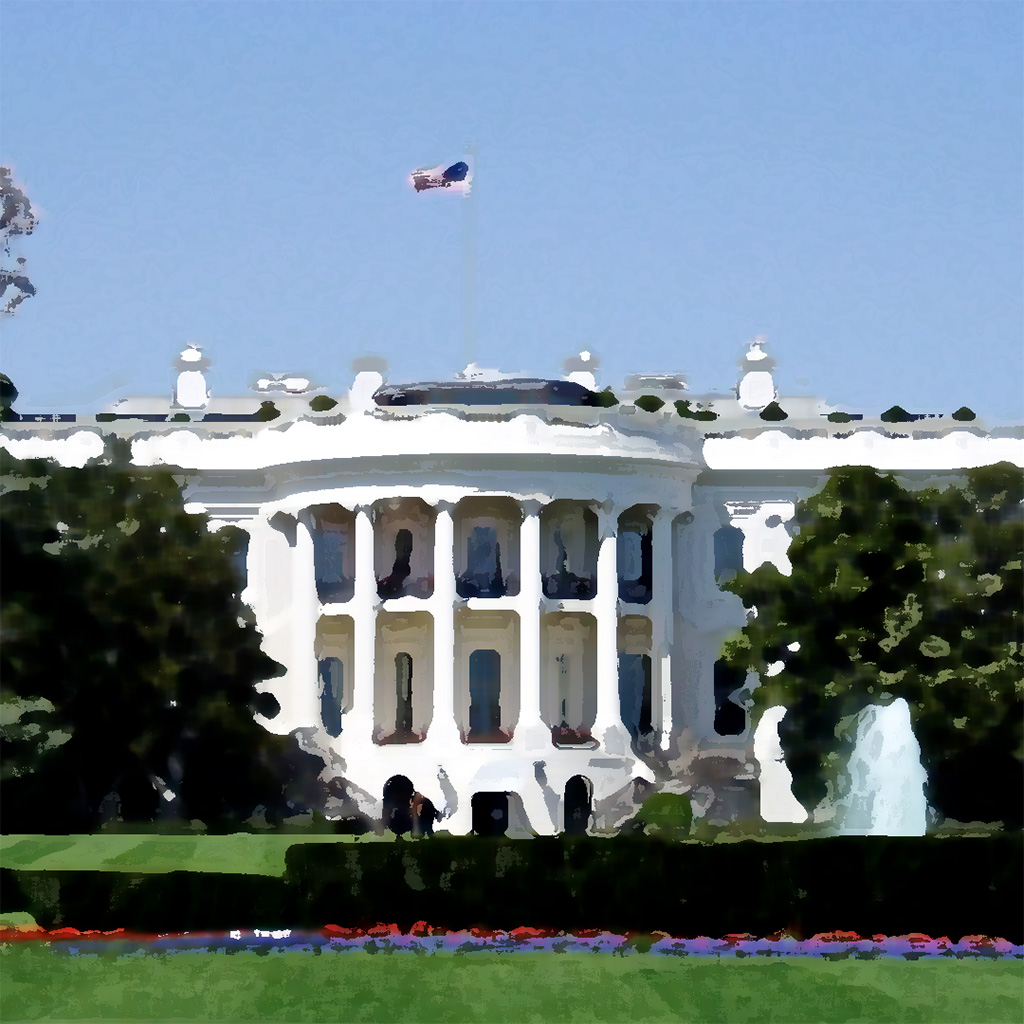Every year in the months leading to Easter, media outlets confront their readers and viewers with the perennial question: who was Jesus of Nazareth? The CNN series “Finding Jesus: Faith, Fact, and Forgery” explores historical questions of texts and artifacts in Christian belief, and the New York Times’ Nicholas Kristof wonders aloud in his column about whether there is a place for people like himself in Christianity—people who do not believe in any of the supernatural or theological elements of the Gospels but appreciate the value of some subset of teachings of Jesus that they find palatable. The release of Christian-themed movies also provides plenty of fodder for discussion, such as the countless commentaries following Mel Gibson’s 2004 box-office success The Passion of the Christ.
While the seasonal media frenzy around the identity of Jesus can correctly be attributed to a desire for increased readership and viewership, there is a deeper struggle underway within Christianity itself, wherein lay people are grappling with questions concerning the identity and character of Jesus of Nazareth. The name of Jesus is invoked to support and also to oppose any number of political and social stances, from gay marriage to border walls to tax policy. At the same time, questions of Biblical historicity that for more than a century were almost exclusively the domain of specialists are now being argued in books and online videos that make skeptical and critical scholarly perspectives accessible to the average Sunday School participant. Largely thanks to the popular work of critical scholars like Bart Ehrman, Christians operating with assumptions of Biblical inerrancy are finding themselves overwhelmed with questions surrounding the authorship of the gospels, divergences in gospel narratives, and thorny issues such as why the earliest manuscripts of Mark (long regarded by scholars as the earliest of the gospels produced) do not include a resurrection narrative.
The average churchgoer is not likely to bring the appropriate intellectual toolset to respond to the questions raised by the fields of textual and historical criticism, and on a more basic cognitive level, many Christians operate with the devastatingly erroneous assumption that factual historical narratives they hold to be sacred and true, should be immune to rational counterargument. When they encounter just such a rational counterargument, the result is often predictable. Unaware of the biases and ideological commitments of critical scholars, Christians reading critical scholarship often find their faith coming apart at the seams, particularly if their faith is based primarily in the convictions of other people and is lacking any personal experiential dimension.
Latter-day Saints have been affected in recent years by all of these trends, which are only part —but certainly the most consequential part—of a larger crisis of loss of faith in our community. Our crisis of deconstructed belief in the resurrected Christ is made possible by the same epistemic and methodological processes that deconstruct belief in the prophetic calling of Joseph Smith and his successors in the institutional church. Evangelicals and other groups who used to swim in schadenfreude upon seeing Latter-day Saint convictions melt away in the acid of critical attacks, are now horrified to find their own systems, grounded in untenable notions of Biblical inerrancy and “self-validating” authority-based epistemologies, coming apart as many of their own adherents test their Christian convictions in the same critical intellectual solvent.
Liberal Christianity has provided a respite for many who are struggling to retain their faith in the face of critical arguments. Liberal theologians impose naturalistic explanations upon miraculous events documented in the gospels, and thereby relieve their readers from the psychic burden of believing in phenomena that seem to not be empirically verifiable or historically plausible. That psychic burden is further assuaged by focus on the social aspects of the gospel that Jesus and His followers taught and attempted to implement in the early Christian community. Even while the decision to live in the spirit of Jesus’ concern for the marginalized is transformational to the soul, it has become the substance of countless purely horizontal, non-believing professions of Christian devotion.
Similar to the question of what it means to be Christian, “What is Christianity?” has been examined in countless iterations. It is no secret that reconstructing the life and thought of Jesus of Nazareth is an enterprise typically characterized by self-serving analysis and competing selective interpretations of the available historical data. Christian satire site The Babylon Bee humorously captures the problem in an article with the headline “Jesus Was A Socialist Deconstructionist Feminist, Claims Socialist Deconstructionist Feminist Scholar.” The article quotes a fictional academic who asserts: “When I strip away the things that obviously could not have been said by the Jesus of history, the Christ figure is practically an avatar of my own mind.”
More seriously, John Dominic Crossan addresses the problematic variety of findings arising from historical Jesus studies in a frank and forthright introduction to his book The Historical Jesus: “That stunning diversity is an academic embarrassment. It is impossible to avoid the suspicion that historical Jesus research is a very safe place to do theology and call it history, to do autobiography and call it biography” (p.xxviii). Crossan’s assessment is a favor to his readers, some of whom may lack context that would enable them to situate his own scholarship in the academic chaos that is historical Jesus research. In his book The Writings of the New Testament, believing scholar Luke Timothy Johnson further explains the problem:
A pile of pieces does not by itself yield a satisfying picture of Jesus. It is necessary to fit these pieces into an alternative framework than the one provided by the Gospels. At this point, the subjective character of the entire enterprise becomes evident: the framework chosen often reveals as much about the investigator as it does about Jesus. When scholars, all using the same methods and studying the same materials, derive such a variety of “historical” Jesuses—a revolutionary zealot, a cynic radical, an agrarian reformer, a gay magician, a charismatic cult reformer, a peasant, a guru of oceanic bliss — then one may well wonder whether anything more than a sophisticated and elaborate form of projection has taken place (p.555).
The magnitude of this problem is ably portrayed in Charlotte Allen’s sweeping survey The Human Christ, where the problem of ideologically-motivated framing of the Jesus story is presented as a centuries-long quagmire, spanning from Marcion’s efforts to de-Judaize Jesus to the intellectual trends of the enlightenment, to the 18th Century rise of German schools of critical scholarship, and finally to the contemporary work of Crossan, Marcus Borg, and others.
Written in 1998, Allen’s survey predates the rise of University of North Carolina scholar Bart Ehrman. A formerly believing Evangelical Christian, Ehrman lost his faith after contemplating the problem of evil. Pairing his newfound skepticism with training in textual criticism, Ehrman has employed challenging questions around inconsistencies in New Testament manuscripts, along with ambiguities in the historical record, to create compelling counter-narratives to traditional Christian faith. His success in undermining faith has been so widespread that a team of Evangelical New Testament scholars has formed The Ehrman Project, a series of YouTube videos designed to counter his influence. Scholar Ben Witherington has undertaken lengthy page-by-page treatments of Ehrman’s books in order to expose Ehrman’s faulty logic and scholarly overreach.
In Witherington’s critique of Ehrman’s book Jesus, Interrupted, he begins with a discussion of Ehrman’s qualifications:
Bart Ehrman, so far as I can see, and I would be glad to be proved wrong about this fact, has never done the necessary laboring in the scholarly vineyard to be in a position to write a book like Jesus, Interrupted from a position of long study and knowledge of New Testament Studies. He has never written a scholarly monograph on NT theology or exegesis. He has never written a scholarly commentary on any New Testament book whatsoever!
Lest Ehrman accuse Witherington of poisoning the well, Ehrman might remember his own assessment of Reza Azlan’s qualifications to write the book Zealot:
A number of readers have pointed out to me that it’s not fair to say he does not have credentials in the field, because he has a PhD in sociology of religion. Yes, he does. And that would provide him with credentials to write a book on the sociology of religion. But his historical Jesus book is not a sociological analysis. It’s a historical study based on an examination of the New Testament Gospels. The credentials for that kind of study have nothing to do with sociology of religion.
In contrast with these scholarly debates over qualifications, Witherington’s book-length survey of historical Jesus scholarship, The Jesus Quest, engages with a broad sample of studies and explores the methodology of the Jesus Seminar, whose participants famously engage in a voting process and utilize a set of criteria (often arbitrarily, depending on the scholar) to determine which of the sayings of Jesus in the gospels can be considered authentic. Witherington’s book joins Charlotte Allen’s Human Christ, N.T. Wright’s Who Was Jesus? and Craig Evans’ Fabricating Jesus in the crowded field of surveys of historical Jesus studies, and the proliferation of YouTube presentations by Ehrman and others indicates that this apologetic genre has room to flourish in online media formats.
Observers of the field of historical Jesus studies know that there will never be enough books and presentations to counter every critical argument; the proliferation of books and media is fueled by powerful incentives in terms of both financial compensation and validation of the worldviews of the consumers of these materials. It’s precisely for this reason that I would argue more attention to worldview and bias is essential to rendering inert the tendency of this information to overwhelm. To that end, Ehrman’s openness about his loss of belief in God over the problem of evil is an important confession of a priori bias against the historicity of the miracle-filled narratives of the gospels. Ehrman’s bias sees its opposite in that of NT Wright, who often describes a childhood experience of God’s love as a formative moment that would serve as an epistemic lens for his adult scholarly career. Wright’s Christian Origins series helpfully provides several chapter-length discussions of the impact of worldview and epistemology in New Testament studies. Scholars like Witherington and Evans are very open about their belief in the divine authority that infuses scripture, and as might be expected of creedal Christian scholars, their studies reflect a bias toward traditional Trinitarian interpretations of the New Testament text.
Among liberal scholars, acknowledgements of bias sometimes take the form of a personal story, as in the aforementioned case of Bart Ehrman and his loss of belief in God. In other situations, it takes the form of metaphysical pronouncements like Rudolph Bultmann’s naked assertion that “It is impossible to use electric light and the wireless and to avail ourselves of modern medical and surgical discoveries, and at the same time to believe in the New Testament world of spirits and miracles.”
Additionally, modern liberal scholarship often reflects a bias toward the fallacy of composition: if any segment of scriptural text is of questionable provenance, then all scriptural texts can be considered to be of questionable provenance; if any narrative in scripture can be considered allegorical, then allegory is an appropriate genre category for all of scripture; and so forth.
In recent years, another form of liberal bias was displayed in Richard Rohr’s bestselling panentheistic treatment of Christ, The Universal Christ. Rohr’s expression of the good news of the gospel of Jesus Christ takes the form of a series of questions to the reader:
What if Christ is a name for the transcendent within every “thing” in the universe? What if Christ is a name for the immense spaciousness of all true Love?
What if Christ refers to an infinite horizon that pulls us from within and pulls us forward too?
What if Christ is another name for everything—in its fullness? (p.5)
Rohr does not always share other liberal theologians’ bias for naturalism; his worldview is panentheism in the form of a Christ essence that is somehow in everything. In one sense, Latter-day Saints may resonate with this representation of a “cosmic Christ” as it echoes the discussion of the Light of Christ found in D&C 88. But Rohr’s cosmic Christ is then portrayed as a being with views that rarely if ever diverge from American progressive political orthodoxy and its vision of social justice. Christ in the person of Jesus of Nazareth is portrayed as operating in opposition to Second Temple Judaism (rather than as a devout adherent to His faith), and also described as having the spirit of a woman in a man’s body, answering progressive longings for an intersectional incarnation. Ultimately, despite the many productive discussions of Christian teachings that are contained in The Universal Christ, the book’s portrait of a cosmic Christ resembles nothing so much as a cosmic Richard Rohr. A sad moment in the book is Rohr’s admission that “For the last ten years I have had little spiritual ‘feeling,’ neither consolation nor desolation.” As a strong admirer of Rohr’s other work, I wish he had resisted the impulse to write on the very most consequential of theological subjects during a period of inability to sense God’s influence in his life.
What should be the Latter-day Saint response to a field that is so beset with intellectual entropy and ideological self-affirmation? Despite the myriad problems in the field of historical Jesus studies, it would be a mistake to dismiss all of the work of these scholars. James and Judith McConkie’s 2018 study Whom Say Ye That I Am is an excellent example of how believing Latter-day Saints can synthesize the work of historical Jesus scholars and render a historically-informed portrait of Jesus that is both faithful and challenging. But to prepare for broader engagement with this field of scholarship and for the less intellectually-intensive popular debates over Jesus taking place in our media outlets, our first priority should be to get our own house in order, and that begins with an honest examination of the quality of our theology as understood among rank and file members of the Church of Jesus Christ. Terryl and Fiona Givens are making strides in improving our theological assumptions in The Christ Who Heals and other related works, but the seeds of quality theology cannot sprout and bear fruit in toxic or fallow intellectual soil. The healthy soil of our unique Christian message should be formed of mature teaching and practice of grace and charity, along with an epistemology that values personal experience and credible witness testimony over the agnostic philosophical commitments that govern academic discourse.
In that vein, we do not need to share in the dissonance of commentators (often white males of privilege) who profess to value the voices of women and yet reject the witness testimony of Anna the Prophetess, the woman who anointed Jesus at Bethany, Mary at the tomb, or in the current dispensation, Emmeline B. Wells in the temple, over the fact that their witness testimony does not conform to modern standards of historiography or universal empirical verifiability. We can celebrate and fully accept the testimonies of those women, placing them comfortably in the long chain of corroborating witnesses of the resurrected Christ that span from antiquity to the present. From an epistemic standpoint, we can affirm Bruce R. McConkie’s statement that “God stands revealed or He remains forever unknown,” and reiterate Jesus’ declaration that this revelation is most possible among simple people (Luke 10:21-22). More recently, President Russell M. Nelson’s recent encouragement to “Ask your Heavenly Father if we truly are the Lord’s Apostles and prophets” is the most compelling of epistemic positions in the contest of opinions regarding the identity of Jesus of Nazareth. Opinions that emerge from debates among the unconverted in popular media and the chaotic field of historical Jesus studies will never approach the epistemic value of restoration witness testimony.
Our criticism of the excesses of liberal scholarship furthermore need not be answered with excesses that are rooted in the conservative temperament so prevalent in, for example, U.S. Evangelical churches. We can perhaps set aside our well-intended instinct to harmonize the gospels and instead explore the unique priorities and voices of the authors. We can acknowledge that Jesus in mortality was speaking from a first-century Jewish worldview, to first-century Judean audiences. If ideologues misuse New Testament messages of social justice in the service of a naturalistic worldview, we can resist the temptation to overcorrect; we can fully and honestly explore Jesus’ prayer that “Thy Kingdom come; Thy will be done on earth as it is in heaven” and advocate for public policy ideas that will enable society to conform to God’s vision for humanity in the present. Our firm declaration in The Living Christ that Jesus was the Jehovah of the Old Testament also provides us with a much greater impetus to explore the social justice messages of the Hebrew prophets, and to interpret their messages with the additional exegetical resources of our open canon.
Finally, we are in a better position to prevent contamination of our spiritual soil with the intellectual poisons that have killed our political discourse: If liberal commentators err in claiming that Jesus’ lack of public pronouncements on gender dysphoria or abortion constitute His concession-by-silence to modern progressive views on those issues, then we do not need to conclude by way of the same logical fallacy that Jesus’ silence on pollution of natural resources or His silence on family separation at the U.S. Southern border somehow hint at His indifference to these moral and policy failures. Being more attentive to the influence of our partisan political loyalties in our treatment of the message of restored Christianity can enable us to stand in contrast with both contemporary Evangelical Christianity and its progressive opponents, both of whom seem presently unable to distinguish between God and Caesar.
When political progressives are rightfully disgusted with propaganda paintings depicting a close relationship between Jesus Christ and right-wing political figures, the answer is to speak with conviction of Jesus Christ as Jehovah communicating to Isaiah “thus saith the high and lofty One that inhabiteth eternity, whose name is Holy; I dwell in the high and holy place, with him also that is of a contrite and humble spirit, to revive the spirit of the humble, and to revive the heart of the contrite ones.” As progressives challenge the moral and policy incongruities that they perceive among religious conservatives, they would do well to be mindful of severe rhetorical limitations intrinsic in a liberal mental portrait of Jesus of Nazareth as one of many ancient speakers of truth to power—especially when compared to the persuasive power available to those conceptualizing Jesus as the resurrected Christ and the God of Israel.

















